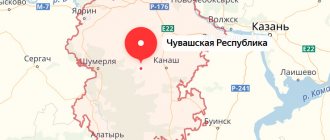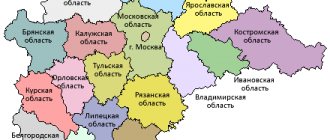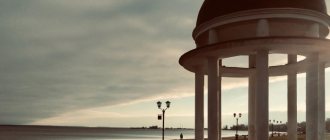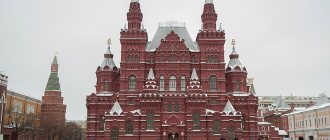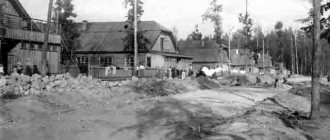- October 12, 2018
- Directions
- Nadezhda Kurchenok
Descriptions of the natural places of Karelia can be found both in paintings and in works of fiction. Having been here once, it is simply impossible to forget it. But the question may arise: is Karelia Russia or not? The republic is part of the Northwestern Federal District of the Russian Federation and borders Finland.
Karelia - where is it?
The subject of the Russian Federation was formed as the Karelian Labor Commune in 1920. But already in 1923 Karelia acquired the status of a republic. In addition to the state (Russian) language, local residents communicate in Vepsian, Finnish and Karelian.
The Republic of Karelia (the country of Russia) is located in the Northern part of Europe. In the northeast it is washed by the White Sea. The area is characterized by hilly plain terrain, which turns into highlands in the west. The highest point is Mount Nuorunen in the northwest. Its height is 576.7 m. The total area of Karelia is 180,520 km².
General information about the Republic of Karelia
Distinctive features .
Karelia is a vast region of lakes, forests and swamps. In terms of territory, the Republic of Karelia ranks fifth in the Russian Federation. Nature, mineral resources and historical monuments are the main assets of this northern region. Despite its remote location and seemingly somewhat lost, Karelia has been well known to Europeans since the Middle Ages. Viking leaders visited it on tourist visits, and later Karelia became part of the vast and rich Novgorod Republic.
Here is also the “Kemskaya volost”, which Ivan Vasilyevich from the famous comedy was easily ready to transfer to the Swedish king... But in reality, a little later these lands were transferred to the Solovetsky Monastery, which heroically repulsed all the attacks of the Swedes.
Tourists love to visit Karelia for several reasons. Firstly, there are attractions here that are famous not only in Russia, but also abroad. These are Valaam, Kizhi, and the Solovetsky Monastery, which are included in the UNESCO cultural heritage list. Here you can also look at ancient petroglyphs (images made on rocks), go yachting on Lake Onega, and admire the beautiful landscapes of nature reserves and natural parks.
Wooden churches in Kizhi are masterpieces of ancient Russian architecture
The magnificent nature of Karelia, providing not only peace and relaxation, but also healing, has long attracted people. It was here that Peter I founded the first resort in Russia - “Marcial Waters” (1718). Also in the 18th century, the oldest marble quarries in Russia were discovered here. Karelian marble was used to create many architectural masterpieces of St. Petersburg, including St. Isaac's and Kazan Cathedrals.
Today, the economy of Karelia is mainly the extraction and processing of natural resources: woodworking, pulp and paper industry, metallurgy, development of mineral deposits. The four northernmost regions of the republic have the status of territories of the Far North, which provides benefits to the people living there.
Geographical location . Karelia is located in the northwestern part of Russia, on the border with Finland. To the south of it are the Leningrad and Vologda regions, to the east - the Arkhangelsk region. Part of the eastern territory of Karelia is washed by the harsh White Sea. In the north, the Murmansk region borders Karelia.
The Republic of Karelia is part of the Northwestern Federal District.
Karelia is a country of lakes. There are 60 thousand of them here. The largest freshwater lake in Europe is Ladoga. It is located in the south of Karelia. Another large lake is Onega. Of the 27 thousand rivers of Karelia, the largest are the Vodla, Kem, Onda, Unga, Chirga-Kem.
Mount Vottovaara is one of the most mystical places in Karelia. Photo by Maria Kuzova
The relief of Karelia is predominantly flat, and the highest mountain in the republic (Nuorrunen) has a height of only 576 meters.
Population. In 2012, 636,932 people lived in Karelia. The population density here is low - 3.53 people. per sq. km. If we look at the dynamics of the population of this northern region, we will see that its peak occurred in the early 90s of the last century (approximately 791 thousand people). But when economic difficulties began after the collapse of the USSR, people began to move to places where it was warmer and there was more money.
They live here mainly in cities. The share of the rural population is 22%. Unlike the central regions of the European part of Russia, in Karelia the birth rate is almost equal to the death rate. The natural population decline is −2.8 people. per 1000 inhabitants.
By national composition, the predominant part of the population is Russian (78.88%). Karelians are the second largest (7.08). By the way, about Karelians. This Finno-Ugric people, known from the chronicles of the Novgorodians, lives mainly in Russia (60,000 people), and a small part (12,000 people) lives in Finland.
Crime . Unfortunately, the Republic of Karelia occupies a very high place in the criminal ranking of regions - 7th. For some reason, some residents of the republic do not want to earn money honestly, and they try to get money in ways alternative to honest ones. In the summary of the criminal chronicles of Karelia one can find many cases of fraud, robbery, theft, and domestic murders. In general, it is difficult to find or imagine a crime that would not have occurred here. To be fair, it should be noted that most crimes are committed not in Petrozavodsk, but in other populated areas of the republic.
There is also ethnic crime here. One has only to remember the events of 2006 in Kondopoga, when the local people rebelled, unable to withstand the lawlessness of the visiting Chechens. Only the arrival of additional forces of the Petrozavodsk riot police, and the flight of a large number of “persons of Caucasian nationality” from the city, was able to calm the popular unrest.
The unemployment rate in the Republic of Karelia in 2012 was 6.99%, which is higher than the national average. The average salary in Karelia is about 25 thousand rubles per month. This is an average level for the Northwestern Federal District region. Although in the southern regions (Pskov, Vologda) they receive less, compared to some northern regions (Komi, Nenets Autonomous Okrug) - this is just ridiculous money. On the other hand, only 4 northern regions of the republic have the status of territories of the Far North, and there are no large oil or gas fields where people would be paid big money.
One of the new ones
Property value. In Petrozavodsk, prices for one-room apartments on the secondary market range from 1.4 to 2 million rubles. The price for two-room apartments starts from 1.8 million rubles. Prices for some three-room apartments in new luxury houses can even reach 7 million rubles, but if you wish, you can also find very cheap options in the region of 2.5 million rubles. As for new buildings, one-room apartments are sold in them for 1.8-1.9 million rubles.
Climate. The location of Karelia in northern latitudes, between the Gulf of Finland and the White Sea, determines its climate. It is temperate continental, with a transition to maritime. Summer here is short and cool, even in July the temperature rarely breaks the +20°C mark. In winter, frosts fluctuate around 10-12 degrees below zero. Spring comes late, in April-May. Most days of the year are cloudy, and the average annual precipitation is 550-600 mm.
Gloomy northern sky over Lake Ladoga
Rivers and lakes
The largest rivers in Karelia are the Chirko-Kem, Unga, Onda, Kem and Vodla. There are also beautiful waterfalls on the territory of the republic, for example, Vyg and Kivach. In total, there are about 27 thousand rivers and about 60 thousand lakes in Karelia. By the way, Onega and Ladoga are the largest in Europe. Other large lakes include Vygozero, Topozero, Syamozero, Pyaozero and Nyuk.
Flora
There are 63 species of mammals living in Karelia. Some of them, for example, the brown long-eared bat, the flying squirrel and the Ladoga ringed seal, are listed in the Red Book. Canadian and European beavers live here. “Non-native” inhabitants: a raccoon dog, which was brought from the Far East; American mink from North America. Here you can also meet a wolf, badger, lynx, bear, roe deer and wild boar.
In addition to animals, there are 285 species of birds in the republic (36 of them are listed in the Red Book). The most commonly seen birds are gulls, ducks, owls, hawks, partridges and hazel grouse.
Fauna
In the south of Karelia spruce and pine forests predominate. Closer to the north, only pine trees are found. It is worth noting that many different berries grow in the republic. For example, in the south these are raspberries, cranberries, blueberries, blueberries and lingonberries, and in the north – currants and strawberries.
To protect nature, two reserves have been created - Kostomuksha and Kivach. Scientific tourism is carried out in the protected area, and natural museums and ecological routes have been created. In addition to nature reserves, three parks have been established in the republic:
- Kalevalsky;
- Paanajärvi;
- Vodlozersky.
Much attention is paid to the state forest fund. One of the richest republics of the Russian Federation in this regard is Karelia, where forest occupies about 85% of the total territory. In total, there are 17 forest districts in the republic.
Karelia
The natural features of Karelia provide ample opportunities for active recreation. In addition, in this region they try to preserve the national traditions of indigenous peoples; you can get acquainted with them at festivals held in the republic.
Event tourism
Snow sculptures at the Hyperborea festival
© Petrozavodsk City District Administration Group on VKontakte
, the international winter festival “Hyperborea” is traditionally held in Petrozavodsk . He reveals the advantages of life in the north, in its specific climate, the severity of which does not interfere with enjoying life. One of the most spectacular events of the festival is the competition of snow and ice sculptures, which delight residents and guests of the city even after the holiday until spring.
A colorful costume procession, a kind of winter carnival, a snowman-making competition, winter swimming races, and an ice fishing championship with jigs are also organized. Participants of the event can ride a dog sled, treat themselves to hot fish soup, and the festival ends with a laser show and fireworks.
In May, an unusual event is held in Olonets - the traditional holiday “Olonia - the goose capital” . It is connected with the fact that in the spring the fields in the city area are chosen as a resting place by migratory wild geese, and huge flocks circle over the city itself.
The central event of the holiday is the goose race, in which domestic geese take part. This unpredictable and quite cheerful spectacle lifts the spirits of everyone present. In addition, water competitions on the Olonka River, concerts and an agricultural fair are held.
Republic Day is celebrated on June 8. Its peculiarity is that every year festive events are held in different districts. Due to climatic and other conditions, the date is sometimes postponed. In 2022, for example, the main events took place in Medvezhyegorsk, and the centenary of the formation of the republic in 2022 will be celebrated on a large scale in Petrozavodsk.
Tourists interested in traditional Karelian cuisine should visit the annual Karelian Gate festival in the city of Sortavala in June. Here you can not only try this Karelian pie with classic filling, but also try original versions.
The chefs also prepare the largest wicket and compete in preparing Karelian pies in various categories. In addition to the tasting, guests of the event can take part in a tournament in the ancient Karelian game kyukkä, which is reminiscent of small towns. In addition, the program includes performances by folk music and dance groups of the republic.
You can cheer yourself up and get acquainted with village life at the June international festival of laughter “Kindasovo” . It is held in the village of Kindasovo, in the Pryazhinsky district. Why are the celebrations held in this particular place? The fact is that in folklore there are many tales and stories about the unlucky residents of this village, which served as the basis for organizing a holiday of humor and laughter. Its program includes jokes, anecdotes, performances by famous Russian and foreign comedians, performances by creative groups, practical jokes and competitions.
On the last Saturday of June you can attend the celebration of the Day of the City of Petrozavodsk . Its numerous venues host carnival processions, theatrical performances, concerts, and summing up the results of competitions. But, perhaps, one of the most striking events of this day can be called the traditional holiday “Illusions of the Old City” . It is held in a quarter with historical wooden buildings, where you can see people in costumes of the 20th century, scenes of city life of the late 19th - early 20th centuries, take pictures in historical costumes, learn city dances and take part in the fun of that time. Numerous shops sell hot pies and pancakes, and there are also handmade souvenir fairs. Guests of the holiday can come in costumes and take part in a competition for the best dress.
Music festival “Ruskeala Symphony”
© Band of the music festival “Ruskeala Symphony” on VKontakte
Music lovers may be interested in the Ruskeala Symphony music festival , held in August. The highlight of the festival is its location - performances by musicians from different countries are held in the Ruskeala mountain park, among man-made marble quarries. The event program includes not only classical music, but also modern compositions in classical arrangements, as well as performances by jazz groups.
On the second weekend of July, it is worth visiting the traditional Vepsian holiday “Tree of Life” , held in the village of Sheltozero. Its goal is to preserve the traditions and language of the Vepsians, an indigenous small people of Karelia. Participants of the event will be able to taste national cuisine, watch concerts of creative groups, theatrical performances and folk sports competitions. An exhibition-fair of arts and crafts and crafts is also being organized.
Do you know that Olonets has its own winter character, Pakkaine? According to the legend invented by local residents, this cheerful guy was not afraid of even the most severe frosts and was the ringleader at all holidays. He also loved to travel, in every city he admired his reflection in the mirror, and when he left, it came out of the mirror and continued to live in these places.
According to tradition, on December 1, on Pakkaine’s birthday, all the reflections come to Olonets to take part in the Olonets Santa Claus Games . Winter characters from different cities take part in a carnival procession, compete in traditional winter games, sing and dance, entertaining guests of the event. Guests of the event will be able to take part in winter games and fun, see a collection of New Year's decorations from different years, and learn about the traditions and rituals of the Karelians.
Fishing and hunting in Karelia
Freshly caught fish soup
© Elena Kuleshina
Many people love fishing, because it is both outdoor recreation and moderate physical activity. And the pleasure from the process and the treasured trophies is a separate issue. Karelia has many rivers and lakes containing a wide variety of fish. Pike, burbot, trout, whitefish, bream, peled, grayling, perch and other species are often caught here. Both summer and winter fishing are common.
Popular places include Lake Ladoga, Shotozero and Syamozero in the Pryazhinsky district, Pyalozero in the Kondopozhsky district, Nyuk in the Kalevalsky district. You can go to the reservoir as a wild person with a tent, or choose a more comfortable option with accommodation at a recreation center, where, for a fee, they will help with organizing fishing and provide you with the necessary equipment.
Another popular recreation option is hunting. Often in Karelia they hunt bears, moose, fur-bearing animals (for example, hares, martens, stoats), upland and waterfowl. The list of species permitted for hunting, terms and conditions of hunting should be clarified on the website of the Ministry of Natural Resources and Ecology of the Republic of Karelia.
Seasonal holidays
Each season offers travelers its own interesting recreational opportunities.
Rafting in Karelia
Rafting on the Pongoma River
© Elena Kuleshina
A large number of rivers attract rafting enthusiasts to Karelia; such a pastime allows them to actively relax and enjoy the natural beauties of the republic. In spring, deep and fast rivers are difficult to navigate, so this period is suitable for people with extensive experience and the necessary equipment.
In summer, many rivers become comfortable even for rafting with children. Shuya occupies a special place among the most popular rivers for active recreation. It has interesting rapids, fast and calm sections. Other popular Karelian rivers for rafting include the Uksa, Chirka-Kem, Okhta, and Tumcha.
If you have experience and the necessary equipment, you can organize rafting on your own; beginners can turn to tour operators who take care of all the worries about organizing your vacation and provide you with the necessary gear and equipment. There are both small weekend tours and long routes that are complemented by fishing.
Hiking in Karelia
If you love nature, want to enjoy it to the fullest, and are not afraid of the delights of a camping life with a minimum of amenities, then you should go on a walking tour. Moderate physical activity, wonderful places with almost untouched nature, food cooked over a fire - all this awaits you on the hike.
Most often, such tours are organized to the top of Mount Vottovaara, which is shrouded in mystical secrets. In these places, seids were discovered - clusters of boulders that the Sami worshiped. Another popular route passes through Paanajärvi National Park.
Winter activities
Dog sledding
© Nastenka Pavlik
In cold, snowy times, it’s worth visiting a husky nursery to interact with these smart animals and enjoy a fun sled ride. The most famous nurseries are located in the villages of Kudama, Matrosy, Chalna, Kalevala.
For lovers of active sports - skiing and snowboarding - there are several ski resorts. The Yalgora resort, not far from Petrozavodsk, on the shores of Lake Onega, is popular. The elevation difference on the routes is up to 100 meters. There are several trails of varying degrees of difficulty, a training slope, and comfortable places to stay. Also known are the Gorka ski complex in Petro in the vicinity of Sortavala and the ski slope in Medvezhyegorsk.
Winter outdoor recreation and extreme sports combine snowmobiling. Travel agencies offer a variety of routes that pass through beautiful places in the republic; they can be either short or lasting several days.
